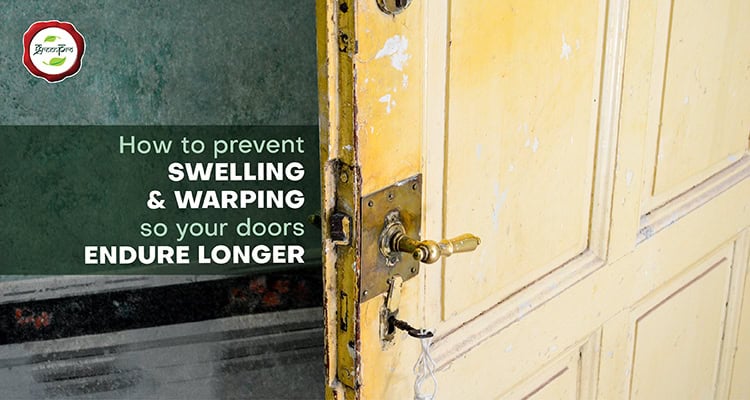Door Frames are an integral part of any home or office, serving both functional and aesthetic purposes. However, they are susceptible to issues like cracking, swelling, and warping, which can not only diminish the visual appeal of your space but also lead to severe consequences, such as a loss of structural integrity. To ensure the longevity and performance of your doorframe, it’s crucial to take preventive measures and address potential problems promptly.
1. Sealing and Protecting Your Doorframe
One of the primary causes of door frame issues is moisture infiltration. Whether it’s from rain, humidity, or water spills, moisture can wreak havoc on the wooden components of your doorframe. To mitigate this, consider the following steps:
- Water-Resistant Sealant or Paint: Applying a water-resistant sealant or paint is a critical first step. Make sure to seal the door frame from top to bottom, with extra attention to the bottom edge. This protective layer acts as a barrier against moisture, preventing it from seeping into the wood and causing swelling or warping.
- Regular Maintenance: It’s not enough to apply sealant or paint once and forget about it. Regular maintenance, which includes inspecting the sealant or paint for wear and tear, is crucial. Reapply as necessary to ensure continuous protection.
2. Temperature and Humidity Control
Extreme temperature fluctuations and high humidity levels can also contribute to door frame issues. Here’s how to address these concerns:
- Avoid Extreme Temperature Changes: Drastic temperature changes can cause wood to expand and contract, leading to cracks or warping. Insulating your home or office properly can help stabilize indoor temperatures, reducing the impact of external weather conditions.
- Humidity Control: Use a humidifier or dehumidifier, depending on your location and climate, to maintain a stable humidity level in the room where the doorframe is situated.
This is especially important in areas with high humidity, as excess moisture in the air can lead to swelling.
3. Professional Installation and Weight Distribution
The way your door frame is installed plays a significant role in its long-term performance. Incorrect installation can lead to issues with weight distribution and stability. To ensure your door frame is installed correctly:
- Professional Installation: It’s advisable to hire a professional for door frame installation. They have the expertise and experience to ensure that everything is set up correctly, from the frame itself to the hinges and locks. A well-installed door frame is less likely to experience problems down the road.
- Weight Distribution: Correct installation not only enhances the doorframe’s structural integrity but also optimizes weight distribution. Evenly distributed weight across the frame minimizes the risk of cracking and warping.
4. Addressing Dampness
Dampness can be a significant factor in door frame swelling. It’s essential to identify and address the sources of dampness in your environment:
- Ventilation: Inadequate ventilation can trap moisture indoors, contributing to door frame issues. Ensure that your space is well-ventilated, allowing air to circulate freely. This is particularly important in rooms like bathrooms, where high humidity levels are common.
- Insulation: Proper insulation in your walls and roof can help maintain a dry and comfortable indoor environment. Insulation not only regulates temperature but also prevents condensation, which can lead to moisture-related problems.
- Wet Clothing and Open Doors: Be mindful of in-house factors that can introduce moisture. Wet clothing left to dry indoors or bathroom doors left open after showers can increase the humidity levels in your home. Address these issues promptly to prevent door frame damage.
5. Ongoing Care and Maintenance
Taking preventive measures is essential, but regular care and maintenance are equally crucial to keep your doorframe in top condition:
- Routine Inspections: Periodically inspect your doorframe for any signs of wear, such as cracks or peeling paint. Promptly address any issues you identify to prevent them from worsening.
- Refinishing: Over time, the sealant or paint on your doorframe may wear off. Consider refinishing your doorframe when needed to maintain its protective layer.
- Cleaning: Keep your doorframe clean from dust and dirt. Use a mild cleaning solution and a soft cloth to wipe down the surface. Avoid using abrasive materials that can damage the finish.
Door Frames are not merely functional components of your home or office but also significant contributors to the overall aesthetic and structural integrity of the space. By following these steps, from proper sealing and temperature control to professional installation and ongoing maintenance, you can prevent or mitigate common issues such as cracking, swelling, and warping. With diligence and care, your doorframe can remain in near-perfect condition, ensuring the longevity and integrity of your living or working environment.
